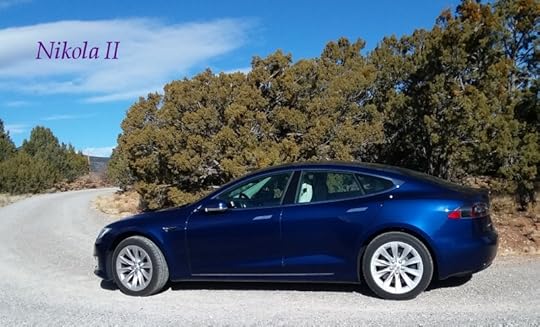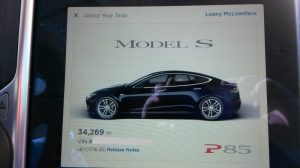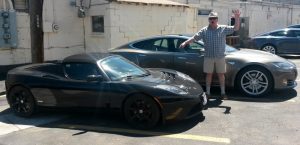Pati Nagle's Blog, page 2
June 30, 2020
That was a year, that was
So I went to my filing cabinet to put away some papers, and to make room for them I pulled out an old file of records from 1993. Before disposing of it, I started to leaf through it. It turned out to be a delightful time capsule!
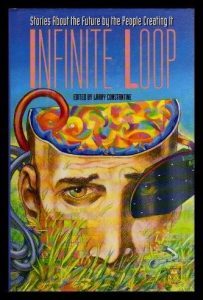 1993 was the year I sold my first short stories, one to The Magazine of Fantasy and Science Fiction, and two to anthologies. One of the anthologies was the first to hit print: Infinite Loop, with, um, a rather unfortunate cover, ever-after known as “Rainbow Brains.” The poor guy looks a bit embarrassed.
1993 was the year I sold my first short stories, one to The Magazine of Fantasy and Science Fiction, and two to anthologies. One of the anthologies was the first to hit print: Infinite Loop, with, um, a rather unfortunate cover, ever-after known as “Rainbow Brains.” The poor guy looks a bit embarrassed.
I was in a writer’s group at the time, and as a fledgling writer, I also hung out with lots of other writers, mostly of fantasy and science fiction, on GEnie. Remember GEnie? (See educational link if you’re too young to remember.)
Movies I saw that year, in the theater or rented, included The Piano, The Secret Garden, The Three Musketeers (Kiefer Sutherland version), Mrs. Doubtfire, Remains of the Day, The Firm (which I don’t remember), Robo Cop, Bang the Drum Slowly (which I don’t remember), and A Few Good Men. I also purchased – on VHS cassette! – Impromptu, Bull Durham, and Field of Dreams. Those last three I still have, now on DVD.
I attended ArmadilloCon, perhaps for the first time, and spent several hours hanging out in Pappadeaux with other writers, drinking and talking and scarfing Cajun food. I also attended Bubonicon, our local con.
Sazlar, the all-girl Middle Eastern band I was in, had two paid gigs that summer. Woohoo! One was at the City of Albuquerque’s Summerfest, and the other was for the opening of an exhibit called “Byzantium Revisited” at the Maxwell Museum. I’d completely forgotten about that one.
Who would have thought that a handful of yellowing papers would be so interesting? Maybe to you it isn’t, but for me it’s a fascinating snapshot of a time when my career was just beginning, of the popular culture at the time, and of technologies that were so advanced and cool then, and are all but forgotten now.
June 23, 2020
About Lettuce
In recent years, there have been numerous stories about lettuce being contaminated by (ahem) unhealthy watering practices. “Throw away your Romaine!” has been in the news over and over.
I don’t like being frightened of produce.
Before Romaine, it was spinach. Again and again, spinach contaminated. It actually gave me a distaste for raw spinach – I prefer it cooked, these days.
But I will not give up my Romaine, dammit. I decided to take matters into my own hands.
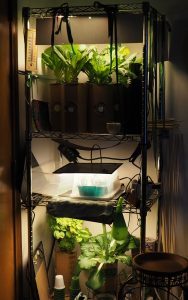 Hydroponic tower garden
Hydroponic tower gardenI now grow my lettuce in the house, year-round, in a low-tech passive hydroponic garden. I’ve been doing this for a year and a half now (or is it two and a half? time is so squishy these days). I haven’t bought any lettuce in many months.
This tower rack sits in the corner of my office (because it’s the coolest room in the house), taking up a 2’x3′ footprint. It’s got lettuces up top, seedlings in the center, and bok choy and basil plants on the bottom. Both of those produce amazing amounts of wonderful leaves. I think they’re both over a year old, now.
I’ve got some more lettuces in my sun room. At the beginning, there were some on a shelf between the kitchen and the living room, but I decided I prefer not to have the bright grow lights so close to the living room (they are a people-friendly spectrum, but they’re pretty bright).
Fresh veggies, especially greens, start to lose nutritional value the moment they’re picked. By growing them at home, I have clean, absolutely fresh greens year-round, with a carbon footprint of…well, probably zero. The lights I use to grow them are LEDs and are powered by our solar system. Might cost a few cents for our community water system to pump water to the house.
The low carbon footprint is important to me, almost as important as the clean food. That Romaine heart that I used to buy for a couple of bucks had to travel from California, and was probably over a week old, maybe a couple of weeks old, by the time I brought it home. And while a couple of bucks seems fairly inexpensive, it’s a lot more than the cost of my lovely home-grown lettuces.
Growing these darlings is a bit different. You don’t wait for the lettuce to get big and then yank it from the garden. Instead, as soon as it’s big enough, you start harvesting the outer leaves. A few at a time, which is why I keep up to a dozen plants going. That’s enough for nice salads for me and the spouse pretty much every day.
The plants get harvested this way for two or three months. When they’re tired, they bolt, and I retire them with thanks and a bit of ceremony. Each plant has probably given as much lettuce as two or three commercial lettuce heads, by then.
It’s a different way of gardening, and a different way of interacting with my food. I’m very aware of the interdependence between me and my plants. I feed them and make sure they have enough light and don’t get too hot, and in return they feed us. Mutual giving.
July 8, 2018
Memory Lane
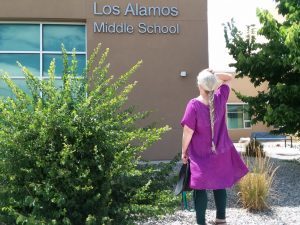 Last weekend I attended my high school class’s 40th reunion. Among the activities was a photo scavenger hunt, where the objective was to post photos taken at various places around town. This was rather memorable for me as I ended up visiting my first home, my first elementary school (now a college satellite campus), my junior high (now combined with the town’s other junior high into a middle school), the fast-food place where I had my first job, and many other memorable locations.
Last weekend I attended my high school class’s 40th reunion. Among the activities was a photo scavenger hunt, where the objective was to post photos taken at various places around town. This was rather memorable for me as I ended up visiting my first home, my first elementary school (now a college satellite campus), my junior high (now combined with the town’s other junior high into a middle school), the fast-food place where I had my first job, and many other memorable locations.
As it happens, lately I’ve been working through some painful old memories from a decade before my high school graduation. My family had a perfect storm of crises that year, and I (being rather young) had a hard time understanding what was going on and also coping with it. The worst part, for me, was an abrupt move we made that fall. The school year had just begun when I was uprooted and thrust into a new home and a new school. Eventually I made friends, some of whom I saw at the reunion, which was great as it reminded me that there were plenty of good times, too.
So I have, to a great degree, made peace with that decade. Going back and walking around the halls of my high school helped me lay some ghosts, and reminded me of better times. And getting back in touch with old friends – who somehow look exactly the same – was a very positive experience. Here’s to you, Toppers of ’78.
March 29, 2018
Model 3 is Popular Mechanics’s Car of the Year
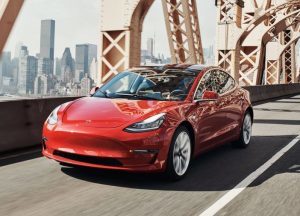 Here it comes. Model 3 is rolling out, and it’s soooo sweet!
Here it comes. Model 3 is rolling out, and it’s soooo sweet!
https://www.popularmechanics.com/cars/g19605464/best-cars-2018/
March 17, 2018
Starman and the Roadster
SpaceX has released wonderful video of the Falcon Heavy launch (February 6, 2018). I am not yet tired of watching it.
This event was more than a history-making technological test. It was art.
February 6, 2018
The Tesla Diaries: 9. The Future
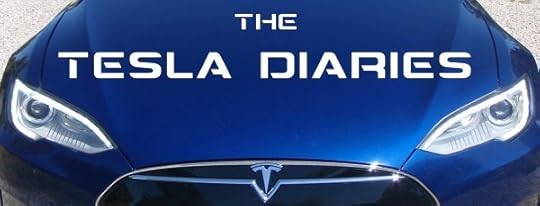
(This post is part of a blog series. In case you haven’t read it, here’s the first post.)
We are living in an amazing time for technology. As I write this, I’m still glowing from watching the successful test launch of SpaceX’s Falcon Heavy. The payload included Elon Musk’s original Midnight Cherry Tesla Roadster, with a spacesuit-sporting dummy driver named Starman. There’s a towel aboard (for you Douglas Adams fans), and a sign that says “DON’T PANIC!” in large, friendly letters, and a set of Asimov’s Foundation trilogy. Starman and the Roadster went into orbit to the accompaniment of David Bowie’s “Space Oddity.” They are destined for Mars.
Say what you will of Elon Musk, the man is both a consummate geek and a superlative showman.
Back here on Earth, I have high hopes for our future. Despite social chaos, humanity is making some really important strides right now. The change from using fossil fuels to using renewable energy (solar, wind, etc.) is just one part of it—though it’s a very important part.
Humanity wants clean energy. Humanity wants electric cars. When I first started paying attention to Tesla, over five years ago, I had hopes that humanity would embrace this tech. Humanity appears to be going wholeheartedly in that direction.
This is why I spent a stupid amount of money on my Magical Space Car. Not because I wanted a toy (although it is fun), and not just because I wanted to lighten my own carbon footprint, but because I wanted to help bring this tech to the masses. Part of what I paid went to help expand the Supercharger network. And part of what I paid went toward designing the Model 3.
When Tesla announced the Model 3 back in 2016, they immediately got hundreds of thousands of reservations. My spouse and I put our money down for one. Now, in early 2018, we are finally seeing production of the Model 3 ramping up.
At $35,000, the Model 3 isn’t cheap, but it also isn’t stupid expensive. It’s within reach for many more people than the Model S and Model X. And it’s every bit as cool as the Model S.
I’ve now had the chance to touch a Model 3 and sit in it. Oh, it is beautiful. There are differences: it’s slightly smaller than the Model S. It doesn’t have a hatchback. It has fewer bells and whistles, though eventually there will be plenty of fun add-ons. We are having to wait to order ours, as we need AWD where we live and it’s not yet available. But in a few months, we’ll be going to the Tesla website’s Design Studio and rezzing up our 3.
The Model S shook up the automotive industry. The Model 3 is even more a game-changer. It is what’s called a disruptive technology, like the e-reader. Remember when Amazon launched the Kindle? Ebooks changed, and are still changing, how we read and publish books.
Watch for the Model 3 to do that. It’s already happening. Other manufacturers are scrambling to compete with Tesla. Many of the features we found so novel when we got Nikola are now being offered on other cars—ICE cars, and hybrids—but there are also new all-electric cars coming. This is good! There’s no way Tesla can meet the demand for electric vehicles. All the auto-makers need to start making them. That’s why Musk gave away the patent for Tesla’s electric motor.
Within a decade, gas stations will be fading out of existence. The air will be cleaner, and drivers will be a lot safer because of advances in technology.
We live in an amazing time.
I know that I am extraordinarily lucky. I count my blessings every day, and I’m deeply grateful for all of them. More than that, I want all my fellow humans to be equally blessed. There’s no reason they shouldn’t be, and I believe we can work together to make it happen.
Keep your heads up, humanity, and keep your eyes on the stars. And when you get a chance, take a ride or a test drive in a Tesla.
Tesla has again updated their referral offer! If you use a referral code from an existing Tesla owner, like this one: http://ts.la/pat9663 (good for five referrals, after which it expires) to order a new Model S or Model X, you will be eligible for free Supercharging as long as you own your Tesla. The same code is also good for a 5-year extended limited warranty on a new solar energy system installation. This offer ends April 30, 2018.
Or just go to Tesla.com and play with the design studio! You can whip up your dream car online without committing to buy.
January 30, 2018
The Tesla Diaries: 8. Collision

(This post is part of a blog series. In case you haven’t read it, here’s the first post.)
We were running errands on a Saturday. I was in the passenger seat. One sharp, percussive “bam” changed the whole game.
I noticed a funny smell, which I later figured out was the propellant from the side-curtain airbag. As I realized we’d been hit, my dismay found its way out in a couple of keening cries of “Oh!” My first reaction, knowing I was unhurt and assuming my spouse was also unhurt, was distress because of the inevitable damage to Nikola from a collision that intense.
My spouse, in the driver’s seat, asked if I was all right. As we reassured each other, it became clear we were both uninjured. I was grateful for that—deeply grateful.
We had been hit in the driver door, hard. T-boned. Other drivers stopped; I rolled down my window and told them we were OK, even as I waited for 911 to answer my phone call.
Two paramedics who happened to be nearby had heard the collision. They rushed over and started asking questions about whether we were in pain, etc. Since the driver door wouldn’t open, they had to get me out and then bring Chris out through the passenger door.
One of them, working in the back seat, introduced himself as Ryan. His partner was also Ryan. The first Ryan remarked that he’d been considering getting a Tesla, and that we had just sold him on it.
There we were, in the middle of post-collision chaos, having a Tesla moment.
We talked with him about the car and its safety features. Although we were unhurt, we decided to go to a nearby hospital and get checked out just in case. We got a glimpse of the car that had hit us—an ICE car. Its front end was pretty badly messed up. Nikola’s driver door was crumpled, but it had protected Chris.
A neighbor’s kid happened to have been in the nearby parking lot, and recognized our car. The neighbor called me to find out if we were OK and offer us a ride home. Again, we were deeply grateful for the help. We had an ICE car at home, so we’d be able to get around.
Things we learned over the next few days: the driver of the other car had been (not badly) injured. That car was totaled. Our car probably wasn’t. We arranged for it to be taken to the one body shop in town that was authorized to work on Teslas. They would have to order parts; it could take a couple of months. But they assured us that a car as expensive as Nikola probably wouldn’t be totaled.
So we waited. Our insurance paid for a rental car, so we each still had a car. We were sad about the damage to Nikola, but grateful that he had protected us from harm.
We drove our ICE cars and tried to be philosophical. We were very, very lucky, overall. But we missed Nikola.
The Tesla app on our phones still worked. Now and then, we’d look at it. Sometimes Nikola wasn’t awake (the emergency responders had disconnected the small battery that powers the controls) so we couldn’t raise him with the app. Sometimes he was awake, and then we could see his location: sitting in the parking lot at the body shop, getting rained on. There was a tarp over the open sunroof, but we still had the sense that he’d never be the same.
About two months later, we got impatient enough to inquire about progress on the repairs. As it happened, the body shop had just then put Nikola up on a lift for the first time. They had discovered more extensive damage than they expected to see.
The steering column had sheared off, and the suspension was badly damaged. The body shop called in an insurance adjuster to look at it, and the adjuster agreed.
Nikola was totaled.
Chris went to collect the rest of our property from the car, and to retrieve the license plate. The saddest part was that Nikola could not be replaced by an identical car. Shortly after we got him, Tesla redesigned the Model S. The 85 kWh battery was no longer available. The sleek “yacht deck” had been replaced by a center console (plus and minus—the new console had more storage space, but we liked the minimalist look of the yacht deck). The frunk was now quite a bit smaller.
And Autopilot (AP1) had been replaced by Autopilot 2 (AP2). We’d heard mixed reports about AP2.
As soon as we knew Nikola was totaled, I went to the Tesla.com website and began designing his replacement. Faced by the choice of getting a smaller, 75 kWh battery or paying extra for the 100 kWh, I decided to upgrade. Nikola was our road-trip car, and with the distances we typically drove in the Southwest, a downgrade would be decidedly inconvenient.
The larger battery came bundled with some features that we probably wouldn’t have paid for had they been separate, like a heated steering wheel, and those sexy lighted door handles that we had coveted but not bought on Nikola. I decided not to get the sun roof. I did, of course, order Deep Blue Metallic.
I got a referral code from a Tesla-owning friend before placing my order, which saved us some money and guaranteed us free Supercharging as long as we owned the new car. Communicating about that took a couple of days, so it was two days after we learned Nikola was totaled that I placed the order for his replacement.
A few hours later I got a phone call from Tesla. They had a “prebuilt” car that matched my hardware specs exactly, and needed only one small change to the software specs. They would give me a nice discount for accepting it in place of my custom-ordered car.
I asked a couple of questions, and when I learned that “prebuilt” meant, in this case, that the car had rolled off the line two days before, I said yes.
The car had been finished on the day we learned Nikola was totaled.
It was delivered in just under two weeks.
Because we would both be in town on delivery day, we again arranged to meet the driver in Albuquerque. We didn’t have the waiting-for-Santa jitters that we’d felt the first time. Mostly what I felt was relief and gratitude that we didn’t have to wait any longer to get back in a Tesla.
Again, our car arrived in an enclosed truck. Different driver, equally competent, and our new car was in beautiful condition. Once again, we were very fortunate.
Nikola II had come home.
(To be continued…)
Reminder: If you use a referral code from an existing Tesla owner, like this one: http://ts.la/chris7110 (good for five referrals, after which it expires) to order a new Model S or Model X, you will be eligible for free Supercharging as long as you own your Tesla. This offer ends January 31, 2018.
January 22, 2018
The Tesla Diaries: 7. Maintenance

(This post is part of a blog series. In case you haven’t read it, here’s the first post.)
An ICE (Internal Combustion Engine) car requires a lot of maintenance. Oil changes, spark plugs, belts, lubing, etc., etc. Usually three or four times a year our ICE car visits the dealership or an oil-change place.
We read through the Tesla owner forums and decided to wait until we hit 50,000 miles before taking Nikola in for maintenance. Partly this was because there are no Tesla service centers in our state (a protectionist law sponsored by the auto dealerships prohibits them; watch for that to change in the near future). Partly it was because the Tesla doesn’t need a lot of fussy maintenance.
We had a puncture in one tire. A tire place took care of that, and didn’t charge us. I suspect they enjoyed the visit from the Tesla.
So our first true maintenance visit, and first maintenance expenses, would come about 18 months after we got the car. Having waited that long, we knew that the visit would be costly. For one thing, it was time for a new set of tires. For another, the brakes would need to be checked, and the things that need lubing (of which there are far fewer on a Tesla) would need attention. The service center was up in Denver, a 440-mile drive. It would be our longest road trip yet, and we planned to make it a mini-vacation. We scheduled the service, then booked a short stay at an historic bed and breakfast. We’d spend a couple of days sightseeing, then collect our car and drive home.
Since his daughter lives in Denver, we invited my brother, Darragh, to come along on the trip. He chose to stay at a hotel closer to where his daughter lives, and also quite close to a Supercharger station. He would hang out with her while we toured around.
The drive to Denver from Albuquerque required three charging stops: a short one (fifteen minutes or so) in Las Vegas, New Mexico, a longer lunch break in Trinidad, Colorado, and a third between there and Denver. We chose to stop in Colorado Springs, and by chance found a lovely French place that made great crêpes, so that became a longer stop than strictly necessary.
Because my brother hadn’t been in a Tesla before, the trip wound up being an extended demonstration and discussion of everything we had learned and experienced so far. We were now comfortable with Autopilot, though still increasing our understanding of it. Darragh was enthusiastic, and we gave him a chance to drive part of the way.
The Las Vegas to Trinidad leg went over Raton Pass, on the border between New Mexico and Colorado, before dropping down into Trinidad. That meant a long, steep climb over the pass right before the end of the leg. We had calculated the amount of charge needed. We wound up dropping below 20%, at which point the car starts actively asking to be charged. The charge indicator icon goes from green to yellow. (Significant emotional impact!) Slightly nervous-making, but not an issue, we knew. We were going downhill into Trinidad, so we’d get some energy back through regenerative breaking.
As we descended, we spotted another Tesla Model S, a 70 (as opposed to our 85 KWH battery). It was going very slowly down the hill, and the driver looked anxious as we passed. We saw this car again at the Supercharger in Trinidad, and talked with the couple who owned it. They had come from Amarillo, along a side highway with no Supercharger, and had been squeaky-low before reaching the charger. It was their first trip along that route.
We were all learning.
We reached Denver, dropped my brother off at his hotel, then went to check into our B&B. Our service appointment was for the next morning, so we got to experience Denver rush-hour traffic on the way to the service center, a small storefront in the south part of the city. We’d never been there before. We had been to the showroom, which is in a big shopping mall, also south of Denver.
The service center was busy, but we had no problems checking in. A line of loaner vehicles out front included several older Teslas, a Mercedes, and a BMW. We were delighted to be given a Tesla to drive around while ours was being serviced.
All Teslas can be named on the touchscreen control panel. We had named ours Nikola well before we got the license plate. Someone had christened our loaner car Loany McLoanface.
Loany was black, and much older than Nikola. So old that it had no cameras – it was blind. This made us feel a little sad, not for ourselves so much as for the car. A blind Tesla seemed tragic to us, since we knew the delight of driving one that could see.
But hey, we still had a Tesla to drive around. Life was good.
Loany took good care of us as we toodled around Denver. There were times when we really missed the cameras—no Autopilot, of course—but overall we were happy.
Saturday morning we drove down to collect Nikola, and in the service center’s parking lot we spotted a Roadster! We had never seen one before. It was so tiny!
Here’s my spouse pointing out the difference between the Roadster and the Model S beside it. The thing came up to his waist.
After admiring this little beauty, we collected our car, and then my brother, and headed home. Stopping again at the French place, we noticed a guy with a bottle of glass cleaner at the Supercharger, cleaning the bugs off his Model S. We couldn’t help laughing when we saw him again in Trinidad – cleaning off the bugs again.
It was a pleasant drive home. I rode in the back seat, and we gave my brother another chance to drive. I remember looking up from my book to find my spouse gently dozing in the shotgun seat, while my brother gazed out the driver’s window at the scenery. Nikola, on Autopilot, was taking care of us.
(Remember – Autopilot is not fully autonomous. You, the driver, are still responsible for what the car is doing. But it’s really nice to be able to take a long look at the scenery now and then.)
We got to Santa Fe without incident, and dropped my brother at his place. Within a week, after driving his ICE car around, he was seriously contemplating buying a Tesla. We recommended he put the $1,000 refundable deposit on a Model 3 – and he did – but before the month was over he got impatient and found himself a used Model S.
Funny thing – it was Deep Metallic Blue.
(To be continued…)
Reminder: If you use a referral code from an existing Tesla owner, like this one: http://ts.la/chris7110 (good for five referrals, after which it expires) to order a new Model S or Model X, you will be eligible for free Supercharging as long as you own your Tesla. This offer ends January 31, 2018.
December 21, 2017
“A Carol for This Christmas”
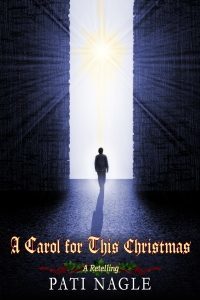 Sometimes inspiration strikes at inconvenient times. This story hit like lightning, demanding to be published now. So here it is: a little holiday treat for you.
Sometimes inspiration strikes at inconvenient times. This story hit like lightning, demanding to be published now. So here it is: a little holiday treat for you.
July 10, 2017
The Tesla Diaries: 6. Autopilot

(This post is part of a blog series. In case you haven’t read it, here’s the first post.)
We’re technophiles. Of course we said “yes” to the free trial of Autopilot. We figured we’d check it out, have a little fun playing with it, and then go back to driving for ourselves.
There’s a lot of misunderstanding about Autopilot. People misinterpret the name to mean “autonomous.” That’s definitely on Tesla’s agenda for the future, but as of 2017 we’re not there yet. Nikola’s hardware will never be capable of full autonomy (although the hardware on Teslas being made today will be, once the software has been fully developed).
Autopilot is best described as a suite of driver-assistance tools. The human driver is still, always, responsible for what the car is doing. Autopilot simply helps out with some of the easier driving tasks, which frees up the human driver for what s/he does best: watching the other drivers on the road.
We understood almost none of this when we accepted the free trial.
The first time we got out on the freeway to try Autopilot, we were nervous. We had been trained to use our hands on the wheel to control the car, and decades of driving experience had reinforced that. To let the car control the steering was a frightening step.
We made sure we had plenty of space around us before engaging the autosteering function. (When autosteering is engaged, cruise control is also automatically engaged.) We set our speed to the speed limit (slower than most of the traffic around us), then held our breath and turned on autosteering.
The Model S (and Model X) dashboard provides an animated, real-time display of the driving environment in front of the driver. This includes lane stripes, which appear differently depending on the computer’s confidence in the accuracy of its perception of reality. If the car is confident that the cameras are seeing the lane stripes correctly, it paints them white. If it’s less confident, it paints them gray. If it’s totally confused, it doesn’t show them at all (and if autosteering is engaged, the car turns it off, essentially saying, “You drive”).
When autosteering is engaged, the lane stripes are bright blue. The car’s task is to stay centered between the stripes. Generally, it does a good job of this. Too good, at times—such as when passing a giant semi that’s riding the lane stripe.
The car’s radar senses the semi, and the car draws a conclusion along the line of: “There’s something big to my right, but I’ve got seven inches of clearance, so I’m OK.” Meanwhile, the human driver is freaking out.
Tesla actually modified the software to change the car’s behavior in this situation, making it sidle away from the big thing a bit, while still staying between the lane stripes. It’s less freaky now than when we first got the car.
This is the sort of situation in which human instinct overrides intellect. You’re letting the car steer, with your hands resting lightly on the wheel, and suddenly your hind-brain takes over and makes you take control. You steer away from the semi.
And autosteering shuts off. It’s that simple to take control of the car back.
Once we understood that, we felt much more comfortable letting the car steer. And after a while letting the car steer, we realized something wonderful.
Driving had become far less stressful.
It’s surprising how much focus is required just to keep your car between those lane stripes. This simple task uses a lot of the driver’s mental energy. By handing this task over to the car’s computer, the driver regains focus that can be directed to other tasks. This reduces stress and fatigue, and increases safety. Even a totally focused human being is less accurate than a computer at the simple task of staying between two white lines. For one thing, the computer is not subject to distractions.
Say you’re driving, and you feel a sneeze coming on. You brace yourself for the moment when you’ll lose control for a second. With autosteering engaged, you don’t have to brace yourself. You might look around to make sure no surprises are heading toward you, but you can sneeze without worrying that the car will veer out of your lane. You can even blow your nose, and then go back to monitoring the drive.
This was a revelation for us, but it wasn’t the most wonderful one. The most wonderful part of Autopilot is actually the adaptive cruise control.
Cruise control is common, of course, and most drivers understand it. Autopilot’s cruise control offers a crucial difference: It maintains a set distance from the car ahead of yours (referred to as the “lead car”).
This means that when you’re driving down the freeway at 75 miles an hour and you come up behind a car doing 65, you will not hit that car. Your Tesla will slow down to match the speed of the lead car, and maintain a set distance from it.
Again, huge stress-reducer, and major safety increase.
In rush-hour traffic, or a traffic jam caused by an accident, adaptive cruise control makes what is normally a high-stress situation entirely comfortable. It even works when your car comes to a complete stop (as long as it was engaged while you were moving). In stop-and-go traffic, the car does the stopping and going. This leaves the driver free to watch what all the other drivers are doing.
When we understood all this, which took maybe a week, we knew we were going to buy Autopilot.
My spouse commutes about 70 miles a day. You bet we wanted Autopilot to help keep him safe and reduce the stress of that daily drive.
If you’re considering buying a Tesla, do yourself a favor. Plan on buying Autopilot. Yes, it’s expensive. It’s totally worth it, and it’s more expensive to add it later, so just get it from the first.
You’ll be glad you did.
(To be continued…)
Reminder: If you use a referral code from an existing Tesla owner, like this one: http://ts.la/chris7110 (good for five referrals, after which it expires) to order a new Model S or Model X, you will be eligible for free Supercharging as long as you own your Tesla. This offer ends in December 2017.

